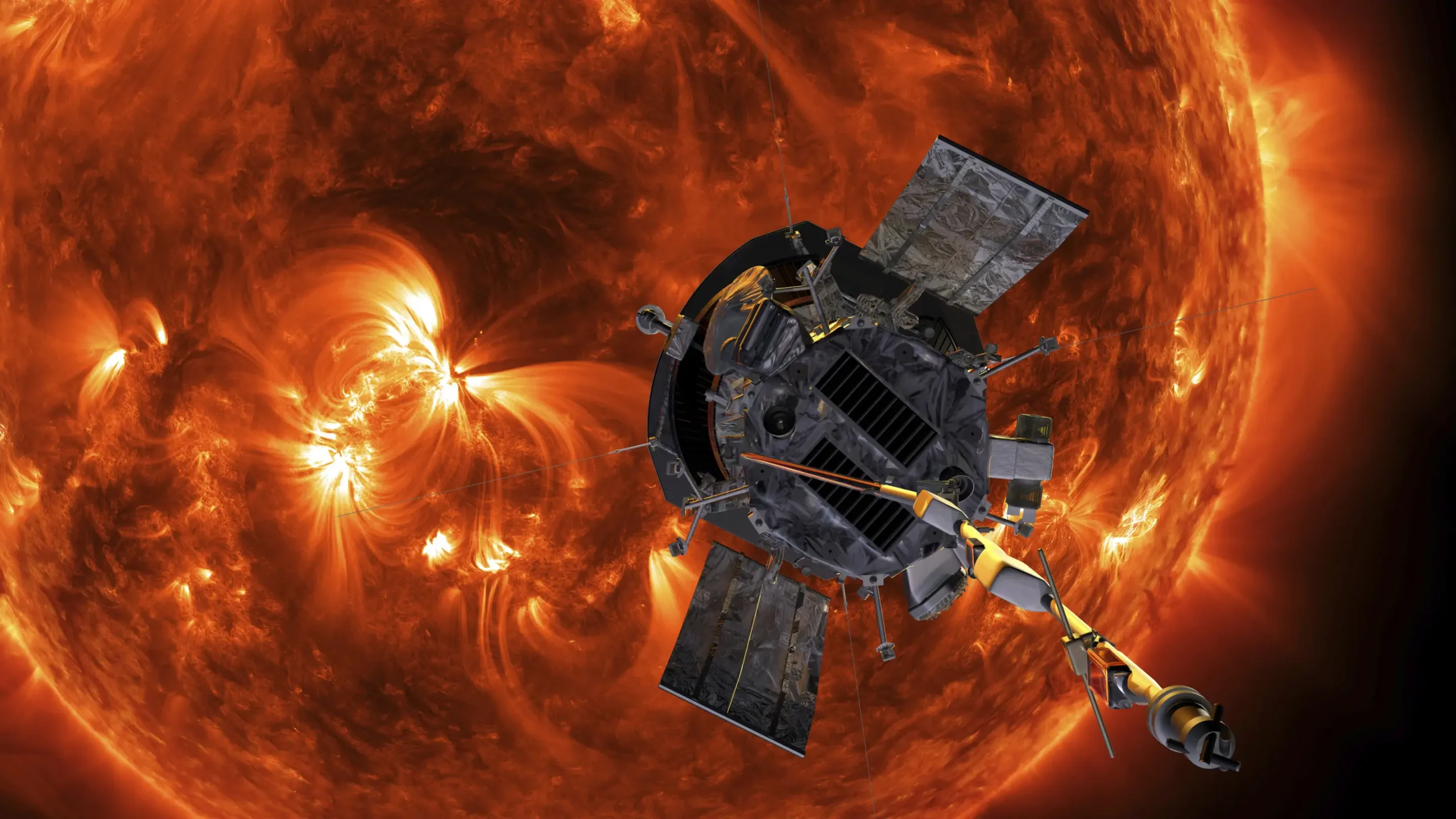NASA’s Parker Solar Probe continues its groundbreaking mission with another daring approach to the Sun’s corona, pushing the boundaries of human exploration and scientific understanding. This latest phase promises to reveal new insights about our star’s most powerful phenomena.
Key Points at a Glance
- Record-breaking solar approach planned
- Advanced measurements of solar wind dynamics
- Critical data collection in extreme conditions
- Unprecedented study of coronal heating
- Implications for space weather prediction
In the most extreme environment ever explored by a human-made object, NASA’s Parker Solar Probe is preparing for another historic close encounter with our star. Flying through the Sun’s outer atmosphere where temperatures soar to millions of degrees, this sophisticated spacecraft continues to redefine our understanding of solar physics.
The probe’s revolutionary heat shield, maintaining a relatively cool 85°F (29°C) in its shadow, allows instruments to function in conditions that would melt most materials in seconds. This engineering marvel enables the collection of crucial data about the solar wind, magnetic fields, and particle acceleration that shape our solar system.
“Each approach brings new discoveries about the fundamental behavior of our star,” explains Dr. Nour Raouafi, Parker Solar Probe project scientist. “We’re seeing phenomena that can’t be observed from Earth, helping us understand processes that affect our entire solar system.”
The mission’s impact extends far beyond pure science. By studying the mechanisms driving solar wind and coronal mass ejections, scientists can better predict space weather events that affect Earth’s technology and power grids. This knowledge becomes increasingly crucial as our society depends more heavily on satellite communications and electrical infrastructure.
As Parker pushes closer to the Sun, each orbit provides new opportunities to solve long-standing solar mysteries, including why the corona is millions of degrees hotter than the Sun’s surface. These insights could revolutionize our understanding of stellar physics and improve our ability to protect Earth-based technologies.
The Science Behind the Mission
Parker Solar Probe’s primary objective is to study the solar wind, a stream of charged particles emanating from the Sun’s corona. By understanding the solar wind’s dynamics, scientists can gain insights into the Sun’s internal workings and how it affects the solar system.
The probe is equipped with four main instruments: the Integrated Field Spectrometer (IFS), the Solar Wind Electrons Alphas and Protons (SWEAP) investigation, the Integrated Science Investigation of the Sun (ISIS), and the Fields Experiment (FIELDS). Each instrument is designed to collect data on different aspects of the solar wind and corona.
The Heat Shield: A Technological Marvel
One of the most impressive features of Parker Solar Probe is its heat shield, designed to protect the spacecraft from the intense heat of the Sun’s corona. The heat shield is made of a special material called carbon-carbon, which can withstand temperatures of up to 1,800°F (1,000°C).
The heat shield is shaped like a disk, with a diameter of about 8 feet (2.4 meters). It is positioned at the front of the spacecraft, facing the Sun, and is designed to absorb and dissipate the intense heat generated by the Sun’s corona.
The Orbit: A Complex Dance
Parker Solar Probe’s orbit is a complex dance around the Sun, designed to bring the spacecraft closer to the Sun’s corona than any previous mission. The orbit is elliptical, with the spacecraft approaching the Sun at a distance of about 3.8 million miles (6.1 million kilometers) at its closest point.
The spacecraft will make 24 orbits around the Sun over the course of its seven-year mission, with each orbit taking about 88 days to complete. During each orbit, the spacecraft will collect data on the solar wind, magnetic fields, and particle acceleration.
The Team: A Collaboration of Experts
Parker Solar Probe is a collaboration between NASA, the Johns Hopkins University Applied Physics Laboratory, and several other institutions. The mission is led by Dr. Nour Raouafi, a renowned expert in solar physics.
The team includes scientists and engineers from a variety of disciplines, including solar physics, space weather, and materials science. The team’s expertise and dedication have been crucial to the mission’s success, enabling the spacecraft to collect unprecedented data and make groundbreaking discoveries.
The Future: A New Era of Solar Exploration
Parker Solar Probe’s mission marks the beginning of a new era of solar exploration, one that promises to reveal new insights into the Sun’s behavior and its impact on the solar system. The data collected by the spacecraft will help scientists better understand the Sun’s internal workings, its magnetic field, and its influence on the solar system.
As the mission continues, scientists will analyze the data collected by Parker Solar Probe, using it to refine their models of the Sun’s behavior and make new predictions about space weather events. The mission’s findings will have far-reaching implications for our understanding of the solar system and our ability to protect Earth-based technologies.
